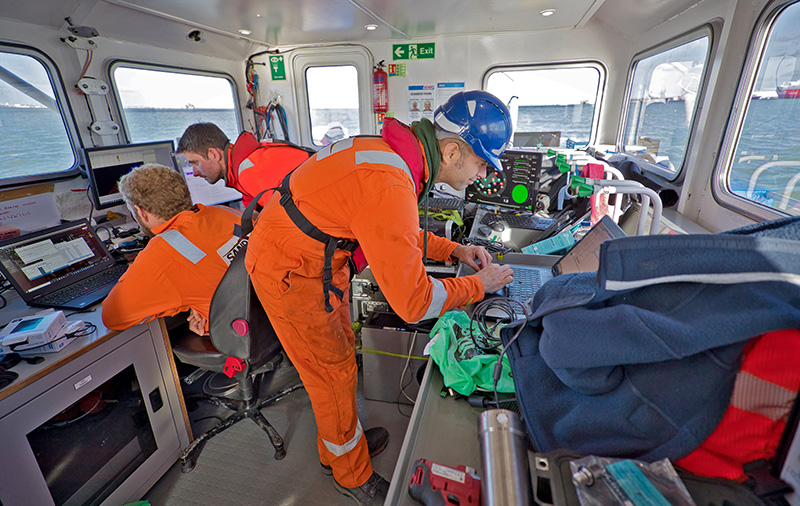Drone collected geospatial data processing training
SafeLane surveyor Blessing Kachidza attended a government sponsored training workshop on processing geospatial data collected by drones.
SafeLane surveyor, Blessing Kachidza, who is operational in support of the clearance of the Falkland Islands, recently attended a government sponsored training programme relating to the processing of geospatial data, collected by unmanned aviation vehicles - also known as drones.
About Blessing Kachidza
Blessing is a very experienced surveyor; he has been working on the Falkland Islands project since 2016, and despite working long hours in arduous conditions, he also finds time to study.
Blessing is currently working on an MSc in Geographical Information Science, and SafeLane's Director of UK Land has supported him with his studies. He's technically endorsed work Blessing does for SafeLane to his academic superiors, and he's helped ensure his thesis topic (soil erosion in the Falklands) meets the academic requirements.
SafeLane has also sponsored Blessing to stay in the Falklands after the end of the working season so that he can attend training courses such as this latest course, processing geospatial data collected by drone.
Speaking about the training course Blessing commented:
Participants were from the Falklands and a range of organisations and government departments were represented
Facilitators of the workshop were from The South Atlantic Environmental Research Institute (SAERI), the Joint Nature Conservation Committee (JNCC) from the UK, and Oregon State University in the USA.
The main focus of the study programme was to help participants understand what goes into deciding the best tools to use - between drone data and satellite imagery - depending on the required output.
We were introduced to the project, remote sensing basics and drone flying regulations and requirements.
After advancing through these subjects, we flew drone missions for data collection, and undertook interpretation of satellite spatial resolution from the ground point of view.
After the drone data and ground truthing exercises we processed a WorldView-2 (2-meter Spatial Resolution, 8-Multispectral Bands) to map habitats along the coast of Surf Bay.
How SafeLane can utilise drone collected data
While the primary focus of the training programme was research activity, discussions relating to practical application of research data and how it can be translated to real world scenarios also formed part of the workshops.
An example is SafeLane Global’s utilisation of drone data in the Falklands already, where it has been used for the calculation of digital elevation models (DEM) and volumes in Yorke Bay.
The same data and other drone collected datasets are also being used in research relating to coastal habitats restoration.
Following completion of the entire programme, Blessing advised:
The use of drones is important for detailed mapping of smaller areas and for DEM point-cloud generation. Satellite images can be chosen for use based on spatial resolution, spectral resolution and temporal resolution.
The choice is dependent on what the issue is in question, available resources and expertise. All technologies require the right expertise and tools (hardware and software) for pre-processing and processing.
An important element of the demonstrations and illustrations was the use of open source tools such as QGIS and SAGA for processing of images and for mapping.
A final point which was said to be in discussion for a while was ownership of the products of the project. FIG and South Georgian Government were widely agreed to be the owners.
I suggested setting up a Spatial Data Infrastructure; a nationwide database that centralises data policy, input, usage and access. This would encourage ownership to be spread over all government departments as everyone stores and accesses their data from the same server.
Find out how we can help you


